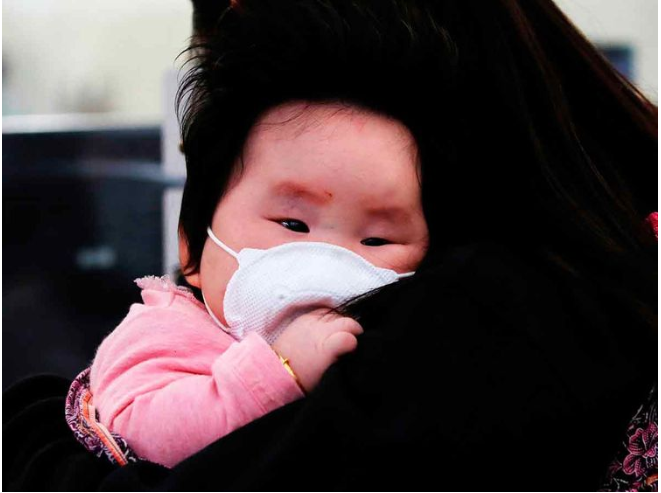What can be done to limit the spread of worry?
Paris: Inflamed by past scares and Hollywood disaster blockbusters, few things feed collective panic like a virus, experts said Thursday, as China locked down the epicentre of a deadly flu-like outbreak.
AFP spoke to health specialists to find out why this is the case, and what can be done to limit the spread of worry.
Why so scary?
“There is an innate sense of fear around disease outbreaks, principally because it is an invisible enemy to the human eye,” said Adam Kamradt-Scott, an expert in the spread and control of infectious diseases at the University of Sydney.
“This generates a level of fear, as no-one can really know if they have been infected until symptoms develop, by which time it may be too late.”
Unlike bacterial infections, which can be treated by antibiotics, viruses respond to very few treatments, according to Sanjaya Senanayake, associate professor of medicine at The Australian National University.
“Also, respiratory viruses, such as influenza, seem to spread more easily from person to person than bacterial infections, and therefore have a higher outbreak potential,” she said.
The outbreak has so far claimed 18 lives across China, with new cases reported in several Asian countries and the United States.
Science historian Laurent-Henri Vignaud said popular culture plays an underappreciated role in conditioning populations to fear pandemics.
“It’s like in horror films where those infected become zombies,” he said.
“It’s extremely unsettling because it calls into question the social bond. We come to fear the sick.”
What can authorities do?
The main driver of anxiety over the new strain of virus is likely to be its similarity to SARS, a viral lung infections which killed nearly 650 people across mainland China and Hong Kong in 2002-2003.
The Chinese government took months to report SARS and initially denied World Health Organisation experts any access.
This time Beijing has locked down some 20 million people in several cities, closing roads and suspending rail and flight routes to contain the virus.
But Tom Solomon, a professor at the University of Liverpool, warned that quarantine could be “counter-productive”.
“It can increase the level of panic, and just cause people to flee by other means,” he said.
It is necessary to limit not only the spread of the virus, but also the fear it provokes, according to Rania MacIntyre, head of the Biosecurity Research Program at the Kirby Institute at the University of New South Wales.
“Health authorities need to find the balance between providing transparent information to the community without causing panic,” she said.
Kamradt-Scott said it was incumbent on authorities to effectively “counter conspiracy theories and rumours”.
Communication by authorities was poor during the last global pandemic scare, of avian flu in 2009, said Vignaud.
“The World Health Organization went straight away to the maximum alert level,” thus causing panic, he said.
What does history tell us?
For Vignaud, the fear of epidemics spans much of our history.
“What comes to mind most is the plague” that spread periodically through Europe in the Middle Ages, he said.
Franco-Croat historian Mirko Grmek last century came up with the theory of pathocenosis – that each epoch of human history will have diseases that fit their particular context.
Vignaud said this includes economic, political and social conditions, as well as those diseases perceived to be the most dangerous.
He gave the examples of cholera and tuberculosis in the 19th Century, which were helped to spread by the water pollution, overcrowding and lack of cleanliness that came with rapid urbanisation.
The modern-day fear of a pandemic – a truly global killer – stems from globalisation, according to Vignaud.
“The good side of it is you can take a plane and in a few hours time be anywhere on the planet,” he said.
“The flip side is that the virus can now travel with you.”
What role does media play?
“The media has a crucial responsibility to ensure that only accurate, factual information is reported, and needs to refrain as much as possible from speculation and hyperbole in these types of events,” said Kamradt-Scott.
But the nature of 24-hour news cycles could nevertheless stoke fears with blanket coverage of what ultimately has only affected a few hundred people worldwide thus far, according to Senanayake.
“They need to keep reporting it till they feel that the outbreak is under control and no longer newsworthy,” she said.
“With this outbreak, because it is in its infancy, I think it is reasonable for the media to keep updating the public as new information comes to light.”



